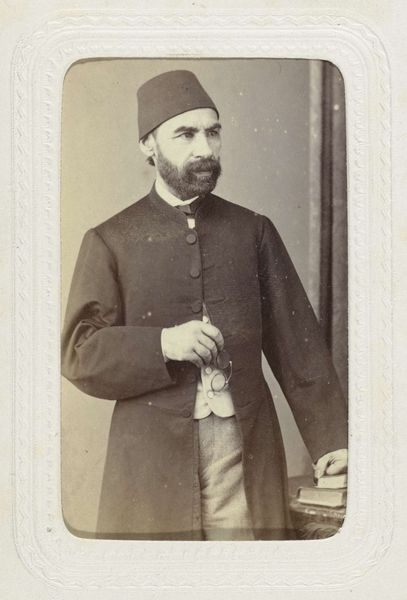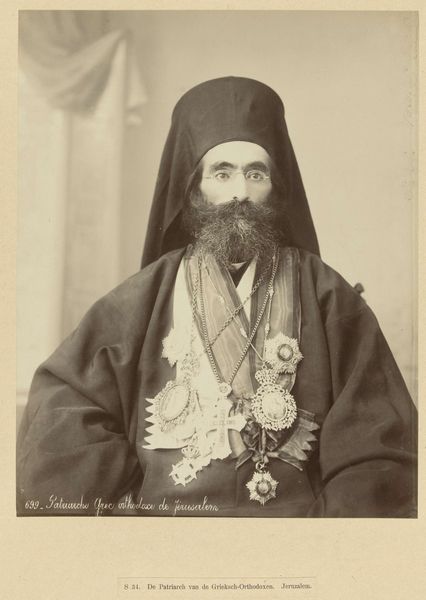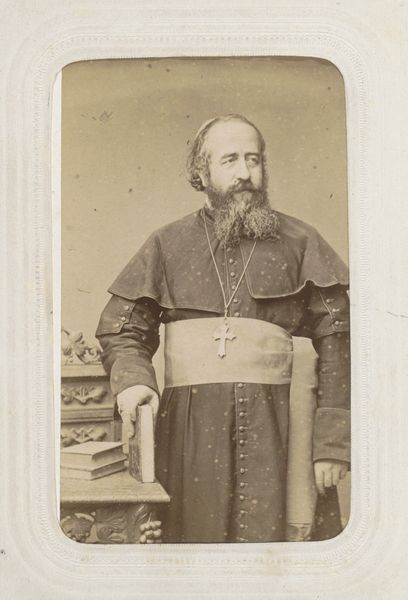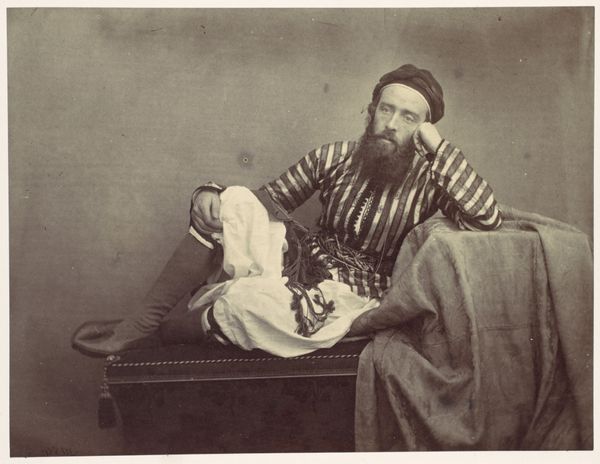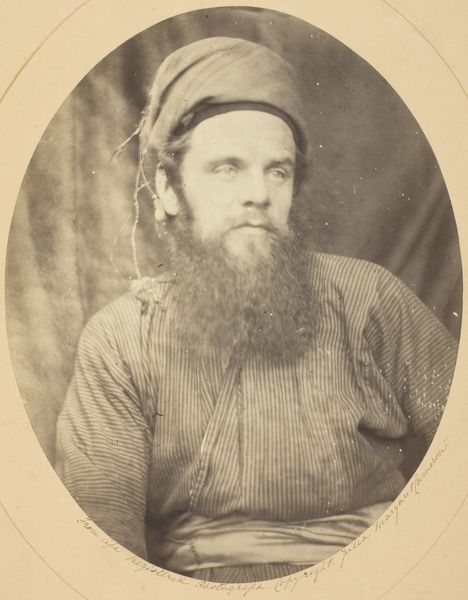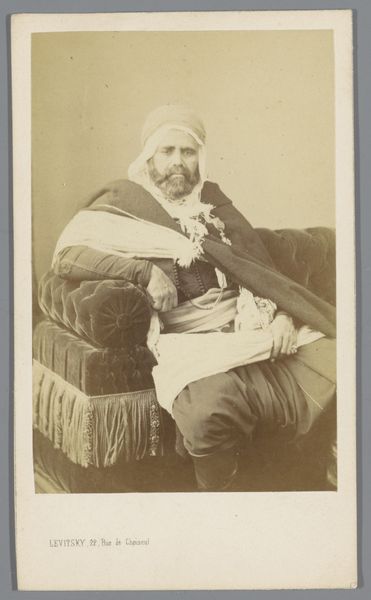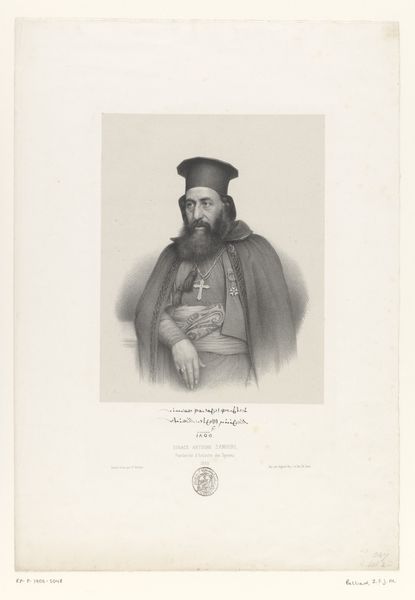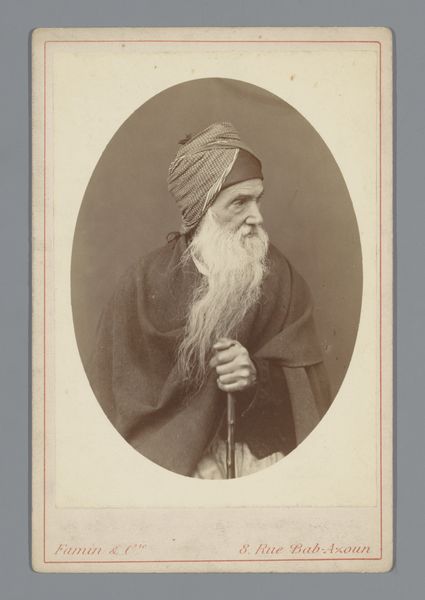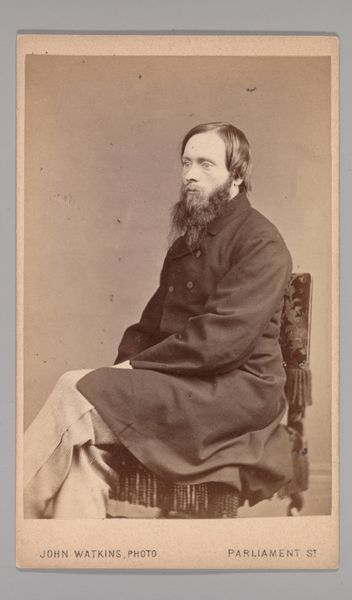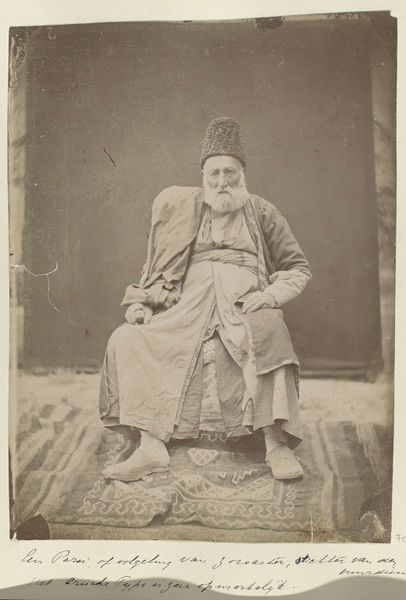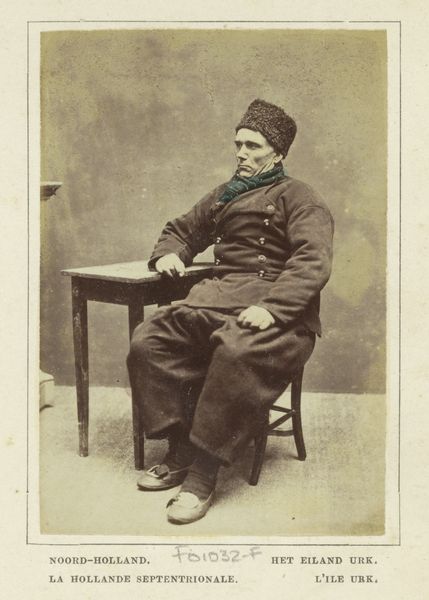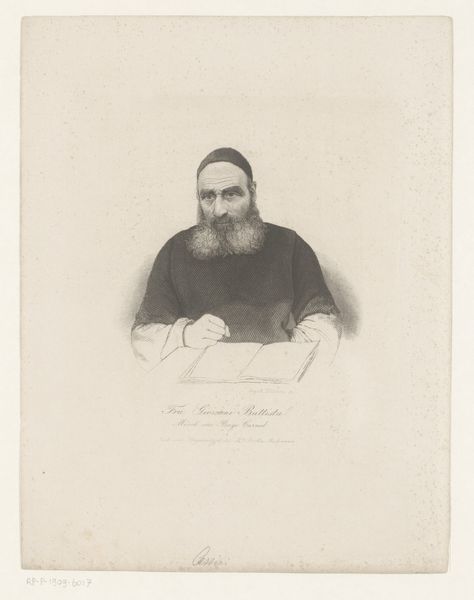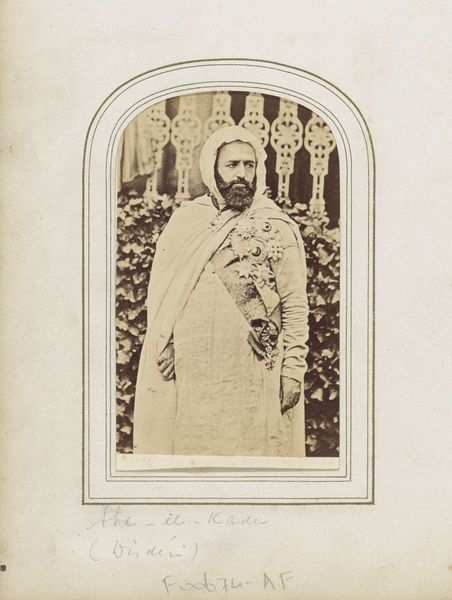
photography, gelatin-silver-print
#
portrait
#
archive photography
#
photography
#
historical photography
#
gelatin-silver-print
#
islamic-art
Dimensions: height 80 mm, width 54 mm, height 296 mm, width 225 mm
Copyright: Rijks Museum: Open Domain
Editor: Here we have a photograph titled "Portret van Salek Effendi Hib," created by Abdullah Frères around 1863-1866. It's a gelatin silver print, currently held at the Rijksmuseum. It strikes me as a very formal and composed portrait. What do you see in this piece, beyond the immediate likeness? Curator: Well, beyond the surface, this portrait, created by one of the first photography studios in the Ottoman Empire, becomes incredibly compelling when we examine its socio-political implications. Consider the subject, Salek Effendi Hib; how does his clothing and bearing perform Ottoman identity, and how does that contrast against the backdrop of increasing Western influence and the empire's internal reforms, the Tanzimat? Editor: That’s fascinating! I hadn't considered the impact of Western influence at the time. So, the way he's presented – the clothing, the setting – it's all a statement? Curator: Precisely. Photography itself was a technology imported from the West. Think about who had access to it, who was being portrayed, and whose gaze was being normalized. Whose stories were being told and amplified through the rise of photography? These photographic studios offered carefully crafted presentations of power and identity. Also, what assumptions do we bring to viewing photography of people who are not of European descent? Editor: So, it is less about objective representation and more about constructed narrative. It makes you wonder how much agency Salek Effendi Hib actually had in his own portrayal. Curator: Exactly! Thinking critically about these dynamics can radically alter our understanding of this image, and images like it. By exploring these issues, we start to challenge our assumptions about photographic truth and historical narratives. Editor: I never thought about portraiture – especially photography – as such a loaded and active statement. I am definitely seeing this portrait in a new, richer context now. Curator: Indeed. And hopefully that continues to grow. Every encounter is a process.
Comments
No comments
Be the first to comment and join the conversation on the ultimate creative platform.
